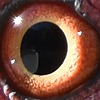HOME | DD
 TheBootesArtVoid — Floofball On Some Tin (Wild)
TheBootesArtVoid — Floofball On Some Tin (Wild)

#animal #animalphotography #animals #bird #birds #natural #nature #photo #photography #photographyanimals #photographynature #photographyphoto #photos #sparrow #sparrows #birdphotography #thebootesartvoid
Published: 2023-07-08 21:22:33 +0000 UTC; Views: 1159; Favourites: 101; Downloads: 0
Redirect to original
Description
Species Name: Eurasian Tree Sparrow
Species Latin Name: Passer montanus
Also Known As: Tree Sparrow, German Sparrow
Native To: Most of temperate Eurasia and Southeast Asia
Conservation Status: Least Concern
Photo Taken At: my frontyard
Size (length): 12.5-14cm (4.9 – 5.5 inches)
Weight: 24g (0.9 oz)
Wingspan: 21cm (8.3 inches)
Lifespan: 2-13 years
Population Size: 190-310 million
Diet: Herbivore, granivore, carnivore, insectivores, graminivore
Lifestyle: Arboreal, terrestrial, altricial, oviparous
Group Name: Crew, flutter, host, meinie, quarrel, tribe
Mating Behavior: Monogamy
Reproduction Season: Spring and Autumn
Eggs Per Clutch: 5 – 6 eggs
Incubation Period: 12 – 13 days
Baby Name: Chick
Sub Species:
European Tree Sparrow (Passer montanus montanus); located in Europe with exception to the southwestern Iberian Peninsula, southern Greece, and the former Yugoslavia. Also located in Asia east to the Lena River and south to the northern ridges of Turkey, the Caucasus, Kazakhstan and Mongolia and in North Korea.
Caucasian Tree Sparrow (Passer montanus transcaucasicus); Located in the southern regions of the Caucasus east to northern Iran.
Afghan Tree Sparrow (Passer montanus Dilutus); Located in northeastern Iran, northern Pakistan and northwest India. Also located further north from Uzbekistan and in Tajikistan east to China.
Tibetan Tree Sparrow (Passer montanus Tibetanus) located in northern Himalayas, from Nepal east through Tibet to northwest China.
Passer montanus Saturatus,Located in Sakhalin, the Kuril islands, Japan, and South Korea.
Passer montanus Malaccensis, Located in southern Himalayas east to Hainan and Indonesia.
Passer montanus Hepaticus, Located in northeastern Assam to northwestern Burma
Description:
Eurasian Tree Sparrows have a rich chestnut nape and crown, they have black patches on their head and back. Their bodies are mostly brown, streaked with black. One way to distinguish these birds are are by the white bars running down their brown wings. The males and females have similar plumage to each other, the juveniles will also have similar plumage to the adults although their feathers will appear a little duller in colouration.
In Australia the Eurasian Tree Sparrow is easily confused with the House Sparrow at a distance. The best way to distinguish between the two species is the black spot on the Eurasian Tree Sparrow which is lacking for the House Sparrow. The Eurasian Tree Sparrow is generally smaller and has a more slender body in comparison to the House Sparrow.
It has been noted that both the House Sparrow as well as the Eurasian Tree Sparrow have interbred every now and then, this can result in hybridization of their young. It has been noted that hybrid males tend to resemble the Eurasian Tree Sparrow more whilst the hybrid females tend to more resemble the House Sparrow species. Hybrid offspring are generally infertile however it has been noted on at least one occasion of a mixed pair resulting in fertile young.
Diet:
The diet of these birds will depend on how developed and mature they are. Full fledged adults will generally be herbivorous in nature feeding mostly on weed seeds such as chickweeds (Caryophyllaceae), goosefoot (Chenopodium), and spilled grain. These birds are also known to visit feeding stations particularly being fond of peanuts.
During breeding seasons these birds will also feed on invertebrates in order to feed their young who will mainly have a carnivorous diet. The young chicks diet will generally consist of insects, woodlice, millipedes, centipedes, spiders, and harvestmen.
Behaviour:
These birds tend to feed as well as roost in flocks, in these flocks these birds can either take the role of 'producers' or 'scroungers'. The producers of the flock will be the ones that actively seek out food sources in a given area, the scroungers will tend to join other flocks that have already located food. These birds don't really have true song of their own, other than the vocalizations used for attracting a mate these birds will use a harsh 'teck' sound whilst in flight. They will use a variety of other monosyllabic chirps as a method during social contact.
These birds tend to be monogamous as they form long-lasting pair bonds. A male will find a suitable place for a nest which will be some kind of cavity that occurs in nature or a cavity in a man made structure. These birds have also been known to re-use some abandoned nests that are no longer in use. The male will find a location suitable for nesting and will then proceed to make an excited series of 'tschip' calls in order to attract a female. The male may also go into the cavity to start building the nest itself which is usually made of hay, grass, or other similar material lined with feathers to improve insulation.
Breeding generally takes place between the seasons of Spring as well as in Autumn. The female will lay a clutch of 5-6 eggs which are incubated by both parents for about 12-13 days. The chicks will hatch and will fledge as early as 15-18 days, they will reach sexual maturity within a year of hatching.
Further Reading (general information):
Wikipedia: Eurasian tree sparrow - Wikipedia
All About Birds: Eurasian Tree Sparrow Overview, All About Birds, Cornell Lab of Ornithology
Kidadl: Did You Know? Amaze-wing Eurasian Tree Sparrow Facts For Kids (kidadl.com)
Animalia: Eurasian Tree Sparrow - Facts, Diet, Habitat & Pictures on Animalia.bio
E Bird: Eurasian Tree Sparrow - eBird
Related content
Comments: 5

👍: 1 ⏩: 1

👍: 0 ⏩: 1

👍: 1 ⏩: 0

👍: 1 ⏩: 1

👍: 1 ⏩: 0


























